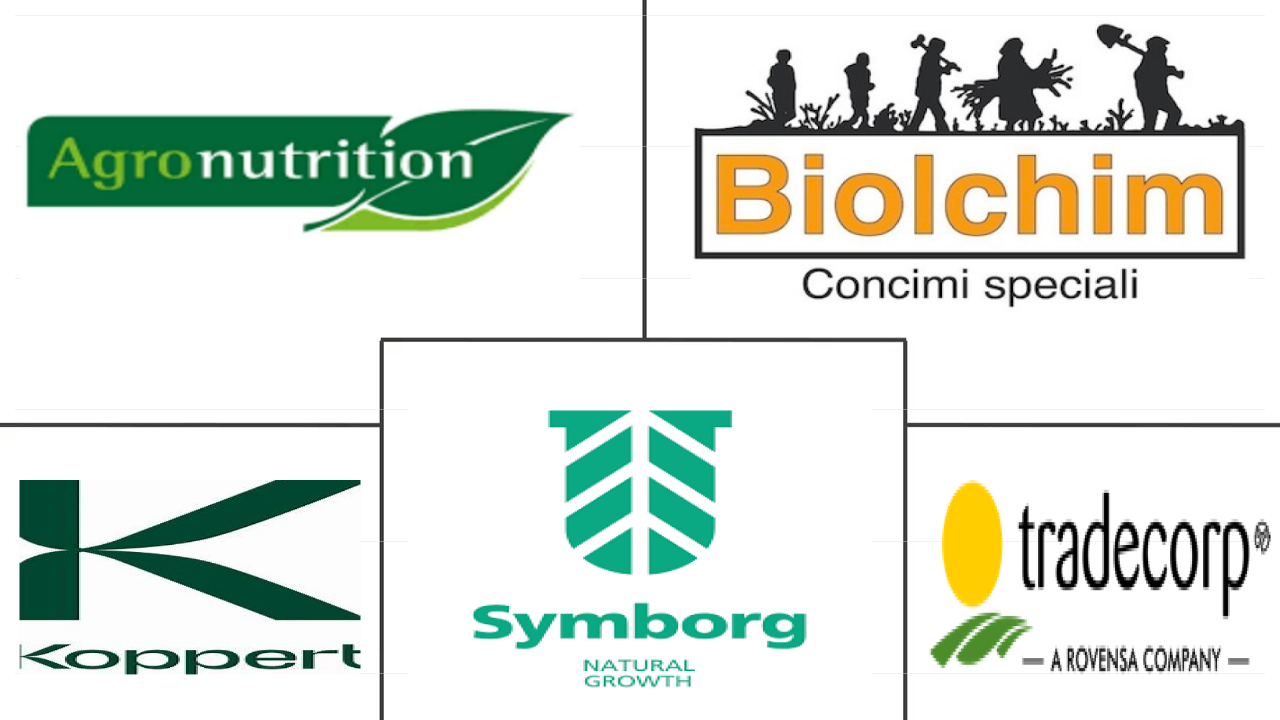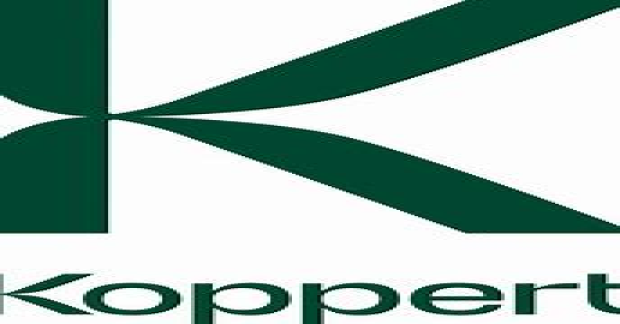Market Size of europe agricultural biologicals Industry
| Icons | Lable | Value |
|---|---|---|
|
|
Study Period | 2017 - 2029 |
|
|
Market Size (2024) | USD 9.35 Billion |
|
|
Market Size (2029) | USD 14.12 Billion |
|
|
Largest Share by Function | Crop Nutrition |
|
|
CAGR (2024 - 2029) | 8.60 % |
|
|
Largest Share by Country | France |
Major Players |
||

|
||
|
*Disclaimer: Major Players sorted in no particular order |
Europe Agricultural Biologicals Market Analysis
The Europe Agricultural Biologicals Market size is estimated at 9.35 billion USD in 2024, and is expected to reach 14.12 billion USD by 2029, growing at a CAGR of 8.60% during the forecast period (2024-2029).
9.35 Billion
Market Size in 2024 (USD)
14.12 Billion
Market Size in 2029 (USD)
5.47 %
CAGR (2017-2023)
8.60 %
CAGR (2024-2029)
Largest Segment by Form
28.03 %
value share, Meal Based Fertilizers, 2023
Organic fertilizers made from meat and bone meal have an indirect positive impact on the environment by reducing the demand for mineral fertilizers and improve crop yield.
Largest Segment by Type
45.29 %
value share, Organic Fertilizer, 2023
Organic fertilizers are high in organic matter, increases soil biological activity and helps to maintain and improve soil biodiversity and contribute to ecological function.
Largest Segment by Crop Type
78.23 %
value share, Row Crops, 2023
The major row crops produced in the region include wheat, maize, corn, barley, and oats. The dominance of row crops is manily due large cultivation area in the region.
Largest Segment by Country
16.77 %
value share, France, 2023
France is one of the largest organic crop producers in the European region. The overall organic crop production in the country accounts for about 1.1 million hectares in 2022.
Leading Market Player
1.56 %
market share, Koppert Biological Systems Inc., 2022

The company with strong presence in Europe is involved in providing customized solutions based on the requirement of growers by agronomic analysis and other technical insights
- There are several adverse effects of excessive fertilizer and pesticide use on the ecosystem. Applying nutrients causes air pollution, while nitrous oxide emissions contribute to climate change and leach into water systems. The manufacturing of synthetic fertilizers is responsible for over 40% of the agricultural emissions in the European Union.
- Organic farming aims to develop agricultural systems that use and depend on non-farm inputs far less. Thus, accomplishing the goals of the Farm to Fork and Biodiversity strategies depends heavily on organic agriculture. By 2030, these goals seek to reduce fertilizer consumption by at least 20% and reduce nutrient losses by at least 50% while ensuring that soil fertility does not decline.
- In the crop nutrition segment, France occupies the largest share of 14.4%, valued at USD 847.9 million in 2022. France rose to first place in 2021 as the country experienced the strongest growth in areas dedicated to row crops in six years, amounting to 308,420 hectares, an increase of 150%. Such growth factors are expected to result in increased demand for crop nutrition products such as biofertilizers and biostimulants.
- In the crop protection segment, Italy occupied the third-largest share of 17.3%, valued at USD 364.4 million in 2022. Macrobial biocontrol agents occupied a higher share of 95.9%, valued at about USD 48.9 million in 2022 in the market, followed by microbial agents with a share of 4.1%, valued at about USD 2.0 million in the same year.
- The increasing awareness among consumers regarding the harmful impact of synthetic fertilizers has increased the demand for organic produce at the international and domestic levels. Thus, the market is expected to experience growth in the region during the forecast period.
- The European region is one of the world's largest organic crop producers, and organic product consumption is high in European countries. Germany and France are some of the major organic crop producers in the region, and they have the highest organic product consumption markets.
- Organic farming is a key sector of European agriculture. In 2019, there were almost 330,000 organic farmers in Europe, reaching up to 20% share of the farming area in the Member States. In addition, one of the targets of the Farm to Fork Strategy concerns the increase in the total farmland under organic farming in Europe, with at least 25% of the EU's agricultural land to be under organic farming by 2030. These initiatives may drive the agricultural biologicals market during the forecast period.
- The overall organic area in the region increased from 4.9 million hectares in 2017 to 6.9 million lakh hectares in 2022. With this increasing trend in overall organic crop area, the biologicals market in the region also increased by about 22.9% during the historical period. It is anticipated to increase by about 63.4% during the forecast period and reach USD 14.11 billion by the end of 2029.
- As an individual country, Germany significantly contributed to the global market for organic products, with demand for organic goods reaching USD 6.3 billion in 2021, or around 10.0% of the total global demand. Germany dominates the European agricultural biologicals market, and it accounted for 8.0% of the market value in 2022.
- The European Commission schemes or projects to decrease the overall chemical inputs in agriculture and the increase in the organic crop area and demand for organic products are anticipated to drive the market during the forecast period (2023-2029).
Europe Agricultural Biologicals Industry Segmentation
Crop Nutrition, Crop Protection are covered as segments by Function. Cash Crops, Horticultural Crops, Row Crops are covered as segments by Crop Type. France, Germany, Italy, Netherlands, Russia, Spain, Turkey, United Kingdom are covered as segments by Country.
- There are several adverse effects of excessive fertilizer and pesticide use on the ecosystem. Applying nutrients causes air pollution, while nitrous oxide emissions contribute to climate change and leach into water systems. The manufacturing of synthetic fertilizers is responsible for over 40% of the agricultural emissions in the European Union.
- Organic farming aims to develop agricultural systems that use and depend on non-farm inputs far less. Thus, accomplishing the goals of the Farm to Fork and Biodiversity strategies depends heavily on organic agriculture. By 2030, these goals seek to reduce fertilizer consumption by at least 20% and reduce nutrient losses by at least 50% while ensuring that soil fertility does not decline.
- In the crop nutrition segment, France occupies the largest share of 14.4%, valued at USD 847.9 million in 2022. France rose to first place in 2021 as the country experienced the strongest growth in areas dedicated to row crops in six years, amounting to 308,420 hectares, an increase of 150%. Such growth factors are expected to result in increased demand for crop nutrition products such as biofertilizers and biostimulants.
- In the crop protection segment, Italy occupied the third-largest share of 17.3%, valued at USD 364.4 million in 2022. Macrobial biocontrol agents occupied a higher share of 95.9%, valued at about USD 48.9 million in 2022 in the market, followed by microbial agents with a share of 4.1%, valued at about USD 2.0 million in the same year.
- The increasing awareness among consumers regarding the harmful impact of synthetic fertilizers has increased the demand for organic produce at the international and domestic levels. Thus, the market is expected to experience growth in the region during the forecast period.
| Function | ||||||||||||||||||||||||
| ||||||||||||||||||||||||
|
| Crop Type | |
| Cash Crops | |
| Horticultural Crops | |
| Row Crops |
| Country | |
| France | |
| Germany | |
| Italy | |
| Netherlands | |
| Russia | |
| Spain | |
| Turkey | |
| United Kingdom | |
| Rest of Europe |
Europe Agricultural Biologicals Market Size Summary
The European agricultural biologicals market is poised for significant growth, driven by increasing awareness of the environmental impacts of synthetic fertilizers and pesticides. This shift is aligned with the European Union's Farm to Fork and Biodiversity strategies, which aim to reduce chemical inputs and enhance organic farming practices. The region's commitment to organic agriculture is evident in the substantial increase in organic farmland, with countries like Germany and France leading in both production and consumption of organic products. The market is characterized by a diverse range of biological solutions, including biofertilizers and biostimulants, which are gaining traction as sustainable alternatives to conventional agricultural inputs.
The market landscape is fragmented, with key players such as Agronutrition, Biolchim SpA, Koppert Biological Systems Inc., Symborg Inc., and Trade Corporation International playing pivotal roles. These companies are actively investing in innovation and expansion to meet the growing demand for sustainable agricultural products. The European market's growth is further supported by consumer trends favoring organic produce, which is becoming increasingly mainstream rather than niche. As the region continues to expand its organic acreage and enhance its agricultural practices, the agricultural biologicals market is expected to experience robust growth, contributing to the broader goals of sustainability and environmental stewardship in Europe.
Europe Agricultural Biologicals Market Size - Table of Contents
-
1. MARKET SEGMENTATION (includes market size in Value in USD and Volume, Forecasts up to 2029 and analysis of growth prospects)
-
1.1 Function
-
1.1.1 Crop Nutrition
-
1.1.1.1 Biofertilizer
-
1.1.1.1.1 Azospirillum
-
1.1.1.1.2 Azotobacter
-
1.1.1.1.3 Mycorrhiza
-
1.1.1.1.4 Phosphate Solubilizing Bacteria
-
1.1.1.1.5 Rhizobium
-
1.1.1.1.6 Other Biofertilizers
-
-
1.1.1.2 Biostimulants
-
1.1.1.2.1 Amino Acids
-
1.1.1.2.2 Fulvic Acid
-
1.1.1.2.3 Humic Acid
-
1.1.1.2.4 Protein Hydrolysates
-
1.1.1.2.5 Seaweed Extracts
-
1.1.1.2.6 Other Biostimulants
-
-
1.1.1.3 Organic Fertilizer
-
1.1.1.3.1 Manure
-
1.1.1.3.2 Meal Based Fertilizers
-
1.1.1.3.3 Oilcakes
-
1.1.1.3.4 Other Organic Fertilizers
-
-
-
1.1.2 Crop Protection
-
1.1.2.1 Biocontrol Agents
-
1.1.2.1.1 Macrobials
-
1.1.2.1.2 Microbials
-
-
1.1.2.2 Biopesticides
-
1.1.2.2.1 Biofungicides
-
1.1.2.2.2 Bioherbicides
-
1.1.2.2.3 Bioinsecticides
-
1.1.2.2.4 Other Biopesticides
-
-
-
-
1.2 Crop Type
-
1.2.1 Cash Crops
-
1.2.2 Horticultural Crops
-
1.2.3 Row Crops
-
-
1.3 Country
-
1.3.1 France
-
1.3.2 Germany
-
1.3.3 Italy
-
1.3.4 Netherlands
-
1.3.5 Russia
-
1.3.6 Spain
-
1.3.7 Turkey
-
1.3.8 United Kingdom
-
1.3.9 Rest of Europe
-
-
Europe Agricultural Biologicals Market Size FAQs
How big is the Europe Agricultural Biologicals Market?
The Europe Agricultural Biologicals Market size is expected to reach USD 9.35 billion in 2024 and grow at a CAGR of 8.60% to reach USD 14.12 billion by 2029.
What is the current Europe Agricultural Biologicals Market size?
In 2024, the Europe Agricultural Biologicals Market size is expected to reach USD 9.35 billion.

